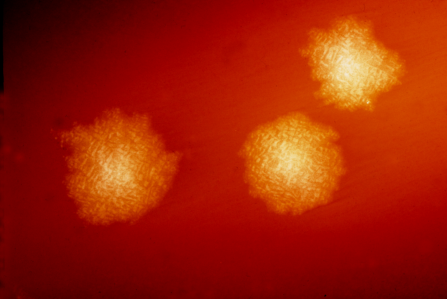Model of fecal transplantation predicts which bacteria will flourish

Fecal microorganism transplant (FMT) is a treatment strategy for illnesses like Clostridium difficile (C. diff) and some other infectious or autoimmune diseases affecting the gut. During FMT, stool from a healthy donor is transferred to a recipient. To be successful, donor bacteria must attach, or engraft, to the recipient's gut, but the forces influencing engraftment and growth have been largely unknown.
In a paper published February 14 in Cell Host & Microbe, scientists provide a statistical model predicting which bacterial strains will engraft after FMT. It is the first predictive strategy for developing a synthetic probiotic—a biologic therapy based on microorganisms acting as a drug. The researchers also found that recipients acquired new bacteria that were previously undetected in both the donor and the recipient, suggesting that the post-FMT microbiome is a mixture of bacterial strains from the donor, recipient, and the environment. In Addition, they learned that the recipient microbiome and immune state also have roles in successful FMT.
"This paper provides a context for understanding how to make these live biological therapeutics as an alternative to transferring raw fecal matter," says co-senior author Eric J. Alm, co-director of the Center for Microbiome Informatics and Therapeutics (CMIT) at MIT. "We describe a model focused on three elements, including bacterial engraftment, growth, and mechanism of action, that need to be considered when developing these live therapies targeting the gut microorganisms, or microbiome," he says.
The scientists studied 20 patients with C. diff infection who received therapeutic FMT. Using high-resolution deep metagenomics genetic sequencing, the scientists studied the gut-level microbiota of donors and recipients before and after FMT up to 4 months. They measured both the strain type and abundance of each strain in donors and recipients to build a predictive model of the presence and the abundance bacterial strains in the recipient after FMT.
After FMT, about 30% of the donor bacteria engrafted in the recipient, and the most abundant strains were more likely to engraft. "That's important to know when designing a microbiome-based therapeutic like this," says the second co-senior author Ramnik J. Xavier, Chief of the Division of Gastroenterology at Massachusetts General Hospital and CMIT co-director.
"If a drug only colonizes 30 percent of the patients you put it in, then the maximum efficacy of your drug is 30 percent." The team detected an unusual "all of nothing" behavior in the 30 percent of engrafted strains. If the donor had five different strains of a bacterial species, for example, all five strains transferred into the patient. They also found that, if the recipient already had some of the strains found in the donor, the probability of those strains engrafting was higher.
From their model, the team showed that the amount of each engrafted strain grown in the recipient could also be predicted.
"Again, that is an essential piece of information because you want to know whether a bacterial strain will be found in trace levels or at high levels so that it can actually produce the metabolite that you want," adds Xavier.
The team developed and applied this model not only to C. diff patients but in other studies with other diseases, including metabolic syndrome.
"We are in the midst of one of the largest disease therapeutics that are being developed based on a human source—bugs within us," says Xavier. "These bugs within us, or the microbiome, are going to have a potential impact for many diseases."
More information: Cell Host & Microbe, Smillie et al: "Strain-tracking reveals the determinants of bacterial engraftment in the human gut following fecal microbiota transplantation" www.cell.com/cell-host-microbe … 1931-3128(18)30038-6 , DOI: 10.1016/j.chom.2018.01.003

















